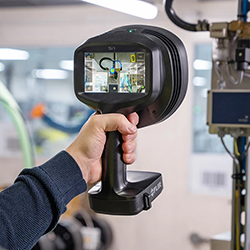Automotive Industry 4.0 - Disrupting the Industry?
A New Boeing Patent Describes Levitating 3D Printing
Republican-Leaning Cities Are At Greater Risk Of Job Automation
Industrial IoT Market Nears $132 Billion in 2020: Technavio
Industry 4.0: What businesses need to know
UK 'risks losing out in Industry 4.0 race'
Boy, do Fanuc and Cisco have a deal for your factory
Is Velo3D Plotting a 3-D Printed Robot Revolution?
Building the Steam Controller
Drake: Robotics Planning, Control And Analysis Toolbox
Toyota Invests $1 Billion in AI and Robots, Will Open R&D Lab in Silicon Valley
Musk, Hawking, Chomsky: Why they want a ban on killer robots.
Fastbrick Robotics' bricklaying machine builds investor interest
Why Drones are Ditching their DIY Roots
Toyota Accelerates Home Helper Robot Program
Records 826 to 840 of 863
First | Previous | Next | Last
Engineering - Featured Product

